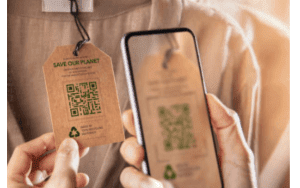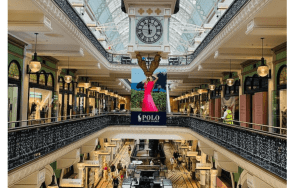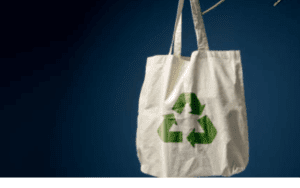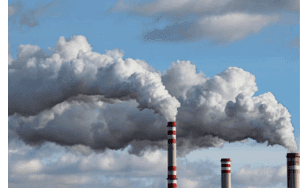ESG in Fashion Industry; Impacts on Environment
 What is ESG?
What is ESG?
The ESG Manifesto’s First Three Letters Are “E,” “S,” and “G.” ESG stands for the “environmental,” “social,” and “governance” variables that are used to evaluate the moral and ethical impact of investing. Fundamental to ESG investment is looking beyond the near-term financial performance of a firm to evaluate its long-term viability.
“ESG” is the shortened form of “Environmental, Social, and Governance.””” variables that are used to evaluate the moral and ethical impact of investing. Many investors today look to these indicators before deciding whether or not to put money into a company.
The method rewards businesses for improving the environment, acting ethically, and looking to the future. At its foundation, ESG investment entails evaluating a company’s long-term rather than short-term sustainability, which is why it has been called “ethical” in nature.
When making investments, the following are some things that ESG investors take into account:
- Efficient use of energy,
- Emissions of Greenhouse Gases,
- Low retention rates,
- Education and certification,
- Employee Experience Maturity Bribery and corrupt practices,
- New-product sales revenues ,
History of ESG;
Origins of ESG In the 1990s. Investors began to realize that standard financial metrics alone were not sufficient for predicting a company’s future, leading to the rise of ESG investment practices. In 1998, John Elkington wrote a book titled “Cannibals With Forks” that delves into the triple bottom line concept in contemporary business.
Widely regarded as the first major expression of this recognition. Elkington suggested including various extraneous aspects in a company’s long-term viability analysis. Elkington invented the term “triple bottom line” to describe the financial, environmental, and social considerations he recommended including in the proposed calculation.
By including the governance aspect, which recognizes that how a company is run will affect its bottom line, ESG can be seen as a continuation and modernization of Elkington’s offer. One example is how a firm treats its employees, which can have a ripple effect on morale and loyalty.
Today, it is widely acknowledged that ESG-related information is crucial to making correct financial analyses. Thus, ESG is no more a moral or philosophical problem but rather a pragmatic acknowledgment of the fundamental connection between corporate finance and society.
Many countries worldwide have enacted legislation and disclosure requirements linked to ESG aspects in recent decades as investors seek ESG-related information for investing purposes. Although the movement in-laws in favor of ESG investment has been gradual, organizations like the United Nations Principles for Responsible Investment have been working hard to promote and support these changes in the law.
ESG’s Three Primary Metrics
Now that you know what the initials stand for and where the term originates, let’s define each criterion in more detail.
The Environment

The environmental component of ESG analyzes a company or organization’s stewardship of the natural environment, considering issues such as waste and pollution, depletion of natural resources, greenhouse gas emissions, deforestation, climate change, and more.
Companies now realize that they are putting not just their survival but the survival of the globe at risk by not acting appropriately as global citizens in the face of climate change. The moment has come for firms to stop accepting environmental damage as the price of doing business and start actively working to mitigate it.
Social
As part of ESG, the social criterion looks at how a company’s actions affect the lives of its workers and the communities in which it operates. This includes everything from the company’s approach to diversity and inclusion to its policies on paid leave, working conditions, and compensation.
Since an organization’s influence on the environment is more clearly quantifiable, this element of ESG can often outshine the social and governance elements. However, a company’s effect on its personnel is crucial to risk management and ethical operations.
Governance
How a business polices itself, or how it is governed, is the focus of ESG’s governance component. The environmental and social sides are easy to understand, but the governance side is where most people need help.
Transparency, accountability, and compliance are all aspects of corporate governance that contribute to a company’s reputation for responsible leadership.
For example, it should avoid criminal activity, use honest and open bookkeeping practices, prioritize diversity when selecting its leadership, and be accountable to its shareholders.
Stakeholder relationships are essential to governance projects because trust is earned through openness and responsibility.
Environmental, social, and governance (ESG) are sometimes treated as separate criteria for reporting. Still, in reality, they all refer to the same thing: material risk factors that are important in any context. For instance, carbon outputs and equitable remuneration are critical risk variables, regardless of whether they are environmental or social.
ESG reporting seeks to decrease risk and promote corporate accountability; historically, social and environmental measures were seen more as an afterthought to daily business. Corporate sustainability reporting is now the norm because employees, investors, customers, and other stakeholders demand that businesses account for their environmental and human rights impact.
How Might a Global Technology Company Implement an ESG Strategy?

World Wide Technology (WWT), a technology service provider and partner in the Global Citizen campaign, is dedicated to its mission to “Make a New World Happen” by caring for the people and communities it serves and creating an environment that is safe, inclusive, and ecologically sensitive.
Its goal is to make WWT a more socially and environmentally responsible employer so that it may maintain its position as an industry pioneer and a welcoming and inclusive workplace for people of all backgrounds and experiences.
In line with ESG reporting metrics, WWT’s Environment, Social, and Governance program prioritizes the planet, its inhabitants, and ethical enterprise.
1, The Planet
WWT is dedicated to responsible resource management to ensure a sustainable future. Conservation of energy, waste management, and water are all crucial factors.
WWT declared its dedication to sustainability by joining the United Nations. WWT has pledged to reduce emissions across the board shortly; as per the findings of climate science, the aim is to attain net zero emissions by 2050 across all worldwide locations.
2, Humans
WWT has a diversity and inclusion team, employee resource groups (ERGs), mental health services, and other programs designed to make the workplace welcoming and safe for all employees. WWT’s Position on Human Rights explains how the company plans to ensure that workers everywhere have access to safe and fair working conditions that uphold their inherent worth as human beings.
WWT’s pillar comprises its attempts to help individuals within the larger community and maintain employee human rights norms as part of its ESG framework.
Giving back to local communities is important to WWT, so the company partners with groups like the American Cancer Society, the Urban League, the Covenant House, and many more. Its Global Community Impact initiative funds groups that work on health and social justice issues and prepare people for successful careers.
Employees are encouraged to take a day off to volunteer and get engaged with a nonprofit of their choosing as part of the company’s annual Day of Caring program.
3, Corporate Social Responsibility
Providers of technological services must adhere to ethical standards of conduct. WWT has always been clear about what it stands for: “honesty, integrity, and trust.”
Executive leadership at WWT consistently reinforces and exemplifies these values, and each employee confirms their responsibility to this mission each year. This helps to ensure that these values continue to serve as the firm’s guiding principles.
Multiple frameworks are in place to ensure that WWT’s core values are upheld. These include the WWT Enterprise Risk Management (ERM) Program, which aims to identify and manage risks that could materially affect the organization’s ability to achieve its strategic objectives.
And the WWT Business Resiliency Program, which aims to reduce vulnerability to disruptions in business operations and improve the company’s capacity to get back up and running quickly after a crisis. WWT Business Resiliency Program,
WWT’s “Safety Always” culture is supported by its commitment to its main safety management principles, its WWT Global Security Team, and its WWT Global Security Capabilities statement.
It is an open secret that the fashion sector and cotton industries are more polluted on our planet, and ESG has a great link with them.
To measure how far along a business or country is in its pursuit of sustainability, ESG uses environmental, social, and governance aspects as indicators. It’s a set of intangibles that measures how well an organization controls its social and environmental repercussions and how well it is governed. To sum up all the non-financial threats and possibilities inherent to a company’s operations, ESG was developed.
It is becoming increasingly common for investors to consider these extra-financial aspects in their analytical process to spot potentially significant threats and promising growth areas.
Also read; Packed With Meat and Cheese, Pasta Salad.
Considér the Environment, Society, and Ethics:

Multiple organizations, including the Sustainability Accounting Standards
Over the past decade, ratings have also increased dramatically. Credit rating businesses like Moody’s Analytics and S&P Global have joined Morgan Stanley Capital International (MSCI) and specialized firms like Sustainalytics.
In 2019, MSCI-focused equity analyst Craig Huber of Huber Research Partners told the Financial Times that the “global market for ESG ratings is currently worth about $200 million and could grow to $500 million within five years.”
These rating frameworks and agencies have such clout that they may influence future regulations.
Also, read; King of Online Retail: Jeff Bezos Jeffrey P. Bezos, Founder and CEO of Amazon.com.
The World Bank Estimation
The World Bank estimates that the yearly worldwide carbon emissions from the fashion business are greater than those from all international aircraft and maritime shipping put together.
The textile industry consumes about 215 trillion liters of water annually, with chemicals, cleansing agents, and microfibers released into the ocean.
The textile industry’s social focus areas include working hours, structure and diversity in leadership, fair wages, job security, gender and race discrimination, safe and hygienic working conditions, and environmental sustainability.
The global push from customers and investors has increased ESG initiatives among textile and apparel companies.
Therefore, many fashion companies now place a premium on having a thoughtful and successful ESG policy to appease shareholders, investors, and customers.
Environment
Many detrimental activities and emissions contributing to climate change can be traced back to the textiles and apparel industry. Sales of textiles and clothing have increased by more than 100% in the last 20 years, making up a significant percentage of the worldwide economy.
In 2016, Americans and Europeans consumed more than 30 kilograms of apparel fibers per person.4 At the same time, From 2000 to 2016, the frequency of discarding garments has risen by 36%.The available data suggests a discernible decline in the mean frequency with which apparel is utilized prior to being discarded.
This results in massive textile waste, with estimates placing annual landfill disposal of textiles at 85%. That’s enough to fill the Sydney harbor annually.
Cotton is an Enormously Water-Intensive Textile.

It takes 2.5 years of drinking water to produce one cotton T-shirt, and cotton growing is worth noting that this particular crop requires a larger quantity of pesticides and fertilizers than any other crop.
A farmer will apply about 360 pounds of fertilizer to an acre of cotton land yearly. It’s important to note that many nitrates can release nitrous oxide. This greenhouse gas poses a significant threat to our environment.
Studies have shown that it can be up to 300 times more harmful than carbon dioxide. We must take steps to minimize our use of nitrates and find alternative solutions to reduce our carbon footprint.
The consumption of synthetic yarns and fibers has experienced a significant surge, skyrocketing from a mere few thousand tonnes in 1940 to a staggering 60 million tonnes in 2018. showing no signs of slowing down. Synthetic fabrics harm the ecology and climate throughout their life cycle.
In addition, each year, the textile sector releases between 200,000 and 500,000 tonnes of microplastics into the ocean. Decomposing can take up to 200 years because they are not biodegradable.
Microfibers are a massive problem in the seas, and synthetic washing fabrics like polyester, nylon, and acrylic are a significant source. An estimated half a million tons of plastic microfibers from synthetic textiles are washed into the oceans yearly.
According to the Ellen MacArthur Foundation, producing synthetic fibers uses about 1% of world crude oil production (about 48 million tonnes per year), making the industry extremely reliant on non-renewable resources.
European households consume about 13 million metric tons of textiles annually (clothing, footwear, and household textiles). Synthetic fibers, such as polyester and nylon, comprise around 60 percent of apparel and 70 percent of household textiles.
Also, read; Health Tips For Winter; For A Healthy And Happy Winter Season.
Some Industries are Heavyweights
Have heard the cry and am currently engaged in research and development on synthetic fiber alternatives and greener manufacturing and dying techniques.
The advancement of technology and scientific investigation are critical factors in making the sector more long-term viable. Materials for athletic footwear and clothes are harvested from the trash that would otherwise end up in the ocean.
Instead of using dangerous chemicals, we are switching to fish skins and all-natural colors. Wasted canvas is being repurposed into new products like backpacks and handbags. At the same time, faux fur is being replaced by fruit skin. Some businesses have a return policy for used clothing to reuse or recycle it.
More Excellent Knowledge Among Shoppers has Led to More Mindful Spending.

Companies with a significant market share are beginning to prioritize environmentally responsible manufacturing and sourcing. On the labels of their products, showing fashion houses now prominently list the percentage of recycled PET and the total volume of water used in manufacturing.
Significant global corporations aim to source a sizable fraction of their raw materials from recycled sources. In particular, ASOS has created a campaign called “Fashion with Integrity 2030,” which pledges to reach “Net Zero” across its whole value chain by 2030.
However, Inditex has promised to eliminate its carbon emissions by 2040. This includes those produced during production as well as those released during transportation.
To have a good effect on local surroundings, mainly marine and freshwater habitats and nearby communities, the company has vowed to cut its overall water use by 25 percent by 2025.
This initiative lays out a roadmap to reduce emissions by the Paris Agreement. Most emissions (96%) come from the fashion supply chain, so the Fashion Charter lays out goals for securing electricity from renewable sources with minimal other environmental or social impacts for owned and operated emissions by 2030. It also emphasizes that brands work with their suppliers to reduce emissions.
As the Fashion Industry Becomes More International,
Companies are making more efforts to guarantee that their worldwide corporate standards for health and safety, worker rights, environmental responsibility, product quality, etc., are met and upheld at every production stage.
Better Work is an initiative of the International Labor Organization (ILO) and Gap Inc. to foster greater worker participation in decision-making and advocacy on the job. Some topics addressed include better communication, leadership development, and women’s empowerment in the workplace.
The International Finance Corporation (IFC) and the International Labor Organization (ILO) have collaborated on a flagship program called Better Work.
Unions and workers join forces with government officials, multinational corporations, factory owners, and other stakeholders in Better Work’s mission to increase productivity in the textile industry by enhancing working conditions.
Inditex has Several Strategic Alliances,

Including a groundbreaking Global Framework Agreement with IndustriALL, the worldwide trade union organization, to ensure positive industrial relations and contented employees.
Corporate Social Responsibility (CSR) is more important than ever as people become increasingly concerned about the environment and businesses’ role in fostering social progress.
Beyond creating jobs and maximizing profits, firms of all sizes can gain from participating in CSR efforts. Corporate social responsibility (CSR) refers to an organization’s pledge to help the community, its employees, and society prosper in ways that benefit the company’s bottom line.
Brands in the fashion industry are actively publicizing their corporate social responsibility initiatives across a wide range of media outlets. They’ve used many media to spread the word about their CSR initiatives.
Sportswear giant Adidas, for instance, regularly publicizes its corporate social responsibility initiatives. Its CSR approach is geared toward giving back to the community from which it receives its support by providing aid to those who are less fortunate.
As a Socially Responsible Corporation, Adidas commits to fulfilling that duty through its CSR activities, which aim to increase the value it creates for society through its services, conduct, and initiatives and to foster society’s long-term progress.
Nike is in the top rank of ESG-friendly performance in the fashion industry and accessories sector, which means it is environmentally friendly.
Nike and Adidas have worked with other companies and organizations to lessen their negative effect on society and the environment.
The Adidas by Stella McCartney line and Adidas’s Work with Parley for the Oceans are two of the brand’s most notable collaborations. The relationship with Stella McCartney concentrated on making as low waste as possible and repurposing any residual fabric.
The Stella McCartney brand is also well-known for its CSR initiatives. The cooperation has enjoyed significant success and has been commended for its aim. Adidas teamed up with Parley to manufacture a wide selection of products using recovered plastics from the ocean.
The most fantastic product released was a shoe constructed entirely from recycled plastic. Both partnerships received extensive publicity, contributing to each brand’s favorable perception8.
Also, read; Traditional Meat Pie With Lamb, Sydney Especial;
Corporate Volunteerism is an Organization-Wide Effort to Inspire and Facilitate Employee Engagement in Community Service.

The organization can plan and implement its programs and encourage eager staff to join. Volunteer time off (VTO) is a form of paid time off that allows employees to help in their communities by volunteering with organizations like charities, non-profits, and fundraising events.
Nearly one-quarter of U.S. businesses are utilizing VTO to turn CSR into a competitive advantage,9 per the Society for H.R. Management’s 2018 Employee Benefits Report.
Eighty-nine percent of respondents to a Deloitte survey of one thousand full- and part-time workers who had volunteered in the previous 12 months agreed that fostering a volunteer-friendly culture benefits businesses in terms of employee morale, workplace atmosphere, and brand perception.10
Promoting Employee Volunteerism Positively Affects the Company’s Bottom Line and the Greater Community.
Workers’ satisfaction with their payments and jobs can enhance productivity and foster a positive work environment. Implementing strategies that promote efficiency and pleasant interactions among colleagues is recommended.
Employers need to prioritize the satisfaction of their employees to maintain a prosperous business. They are more committed to their work and more proud of their employer.
The research indicated that firms that support and promote volunteering boost employee morale, critical thinking, and problem-solving, improve the working atmosphere, and enhance the perception of their brand.
The fashion industry collaborates with international standards, rules, regulations, auditing, and certification systems to safeguard human rights and guarantee acceptable working conditions.
Under its Reform platform, Puma has created social responsibility programs to advance equality.
The organization is committed to ensuring that all employees are afforded the same advancement opportunities regardless of age, race, religion, sexual orientation, gender, or other personal characteristics.
Puma, its brand ambassadors, and partner organizations are committed to eliminating discrimination in sports and life.
Puma has established a thorough list of goals, the 10FOR25, to make the business and its goods more environmentally friendly. Goals are set for climate, human rights, biodiversity, and circularity.
Also read; Vertical Mouse; Benefits of The New Version.
Puma and its Vietnamese Production Partner Investigated the Source of Wage Infractions, Including Employee Hours and Pay.

Puma made speedy upgrades to their production system because they were the only buyer. In response to Better Work’s recommendations, the factory instituted a more open and equitable pay and incentive structure, resulting in higher wages and less overtime.
As part of their efforts to empower women, organizations like the United Nations Resilience Fund for Women are trying to raise and distribute at least $10 million to women-led organizations.
With the help of founding corporate partners and investors like the Gap Foundation, PVH Foundation, H&M Foundation, the V.F. Foundation, and the Ralph Lauren Corporate Foundations have created the Resilience Fund to assist women working in global supply chains.
Also, read; The Role of Joint Family System And The Down Falling of Our Society;
Meanwhile, Almost 3,000 Businesses have Committed to the Women’s Empowerment Principles (WEPs)
Companies like Kering, which owns high-end labels like Balenciaga, Bottega Veneta, Gucci, Alexander McQueen, and Yves Saint Laurent, are working to improve gender equality in their supply chains.
Together with BSR, they surveyed 880 workers in Kering’s Italian luxury supply chain to learn about their perspectives on gender equality in the workplace.
Workplace ethics is the moral framework by which individuals judge what constitutes appropriate and inappropriate behavior in the workplace.
When making ethical decisions in the workplace, employees should consider their and those affected parties’ best interests.
The opposite is true as well: unethical behavior in the workplace can inspire harmful headlines that lead to the destruction of the organization, while ethical behavior can inspire positive employee behavior that contributes to the growth of the whole organization.
Governance

The “G” in ESG refers to corporate governance issues, such as the board of directors, managers, shareholders, and stakeholders’ roles and duties in policymaking and decision-making.
Investors can make the same kind of diligence checks on governance practices as on environmental and social ones, as governance elements outline the laws and processes for governments and businesses. Core parts of corporate governance structures include:
- Controlling dangers.
- Directors’ duties and the make-up of boards.
- The methods used to evaluate business performance.
For example, adhering to ESG governance standards ensures that a corporation employs honest bookkeeping practices and actively seeks out a diverse set of leaders.
The effectiveness of a company’s approach to policy and regulation in guiding business choices, ensuring compliance and satisfying stakeholder needs is quantified through corporate governance measures.
Reputational damage and trust erosion can result from corporate governance problems such as bribery and corruption, excessive CEO remuneration, and persistent lobbying.
Vigorous efforts should be made to improve performance across all three ESG metrics by companies in all industries, including the garment industry. Firms’ bottom lines and the economy as a whole both benefit from good corporate governance.
Also, read; The Role of Joint Family System And The Down Falling of Our Society;
Transparency and Disclosure:
Western clothing companies often need to be more concerned about garment manufacturers’ safety records and working conditions in developing nations like Bangladesh, India, Vietnam, etc.
Highlight concerns include stakeholders’ expectations of responsibility and openness regarding corporate governance.
Therefore, businesses need to share information about their social and environmental management with stakeholders and monitor the development of these disclosure practices.
Companies in the textile and clothing industries are investing heavily in blockchain-based, RFID- and QR-code-supported.
These near-field communication systems will enable the addition of unique I.D.s and other digital information to items (NFC).
Companies in the textile and apparel industries are using these technologies to understand better and address pressing issues, such as greenwashing and the need for more responsible and transparent business practices in light of growing consumer concerns over global warming and working conditions.
Online luxury and fashion retailers Yoox Net-A-Porter and Pangaia collaborated with energy provider EON to introduce Digital I.D.s, which they hope will hasten increased transparency, traceability, and circularity in the sector.
To track an item’s lifecycle from its creation to its eventual disposal, digital certificates called “Unique Digital I.D.s” can be used to keep track of its many incarnations.
Through this technology, consumers and investors can quickly and easily verify the genuineness, history, and repair status of an item of clothing, extending its useful life and promoting a more sustainable fashion industry.
Similarly, T.S. Designs employs QR-enabled passports to validate apparel created in the U.S… At the same time, Reformation has collaborated with blockchain platform FibreTrace to provide clients with, By scanning the Q.R. code, you can easily access valuable information about the lifecycles of our denim clothes.
By utilizing this, you will be equipped to make informed decisions confidently. About your purchases and help you to contribute to a more sustainable future.
The American Garment and Footwear Association (AAFA) has called for digitizing apparel and footwear labeling. Initiatives like the European Commission’s European Data Space for Smart Circular Applications also lend a hand.
Also read; Arjun Rampal’s Birthday; Turn Fifty Years Old.
In April 2021,

LVMH, the Prada Group, and Cartier of Richemont unveiled the Aura Blockchain Consortium, a joint private blockchain network for their respective enterprises. Through unique codes to provide authenticated product records
The consortium’s mission is to promote blockchain technology and raise the bar for luxury goods by enabling transparent and verifiable record-keeping of critical information (e.g., ownership history, product authenticity data, and origin of raw materials).
,. The OTB Group will join in October 2021, and Mercedes-Benz will follow suit in May 2022. After making a purchase, customers are given a password-protected certificate detailing the manufacturing cycle.
Also, read; The Global Community has (nearly) Eliminated Seven Deadly Diseases.
Meanwhile, IBM and Arianee, an NFT Platform
The fashion and luxury industries have revealed plans to work together to issue digital passports for rare and expensive items, complete with blockchain-based provenance.
Arianne aims to revolutionize how people buy and use high-end fashion and luxury goods by enabling companies and owners through NFTs to bring intangible things like experiences, collections, and communities to life in the digital realm.
IBM and Arianee hope to combine their blockchain and business expertise in the luxury and fashion industries to provide the most comprehensive solution for brands, bridging Supply Chain visibility and brand-consumer engagement to improve transparency, safeguard consumer data, and release trust in the circular economy.
IBM will offer integration services to facilitate communication between IBM’s Blockchain Platform-based traceability platforms, client ERP software, and Arianee’s solution.
On January 5, 2022,
A groundbreaking measure was introduced in New York State called the Fashion Sustainability and Social Accountability Act.
If the Fashion Act is passed, New York will become the first state in the United States to require the fashion industry to account for its contribution to global warming and other human rights violations.
New York’s Fashion Act is expected to be a forerunner in this area because of the worldwide nature of the fashion industry, the increasing need for transparency and sustainability from consumers, and the developing body of legislation addressing human rights and sustainability.
To comply with the provisions of this bill, The fashion industry comprises wholesale and retail sectors. Would need to report their environmental and social consequences and establish goals for mitigating those effects.
Also, read; Is it Okay to Go For a Stroll After Meal?
Though Certain Retail Brands May be Affected, Others Will Not

Provisions would only apply to New York-based apparel and footwear businesses with annual global revenues of more than $100 million, limiting the scope to the industry’s most prominent players while still addressing the environmental and social impacts of the fashion industry.
Adopting the Corporate Sustainability Due Diligence (CSRD) Directive in October 2022, the E.U. will update the Non-Financial Reporting Directive that has been in effect until that point (NFRD).
The European Green Deal is a policy package backed by the CSRD that aims to solve the climate crisis by making the European Union a more progressive, resource-conserving, and competitive economic powerhouse that will produce zero reductions in greenhouse gas emissions by 2050.
This the Regulation Aims to Instill Respect for Human Rights and Environmental Protection
Promoting sustainable and responsible corporate behavior is integral to business practices and governance.
The new regulations will guarantee that companies deal with the adverse effects of their activities, both within and outside Europe’s borders and along their value chains.
Companies with a medium to large footprint in the European Union (E.U.) must implement complete value chain due diligence on human rights and environmental concerns by 2025/26. C
Companies with over 500 employees and over €150 million in net turnover worldwide, and companies operating in high-impact sectors with more than 250 workers and over €40 million in net turnover worldwide, are subject to CSRD.
However, the legislation will affect small and medium enterprises by 2026, and many more U.S. companies that generate revenue in the E.U. will be required to comply.
That’s Not Why ESG is Going Away.
Many issues threaten our planet; today, we confront several significant obstacles; it is crucial to acknowledge and tackle significant concerns such as climate change and the shift towards a circular economy. And rising inequality and the difficulty of striking a fair balance between economic and social requirements.
Companies are under increasing pressure from investors, authorities, consumers, and employees to demonstrate that they are effective stewards of natural and social capital and financial capital. (ESG) factors are of utmost importance.in attracting debt, equity financing is growing as more and more investors factor them into their investment decisions.
The Environmental Pillar Deals With What?

Greenhouse gas emissions, as well as emissions that pollute the air, water, and soil. Utilization of resources, including but not limited to whether or not virgin or recycled materials are used in production and how the company ensures that as much of the product as possible is recycled back into the economy rather than thrown away.
Similarly, businesses must responsibly manage water supplies. Deforestation and biodiversity reports are two examples of land use issues that fall under the purview of the Environmental Pillar.
In addition, companies disclose any potential beneficial effects on sustainability, which may lead to a competitive advantage in the long run. This is the most difficult pillar to report on.
What Kind of Things are Classified as “Social”?
Companies must disclose their approaches to employee training and working conditions as part of the Social Pillar. Concerning the reliability of their goods, they report on product liability issues.
They also discuss contentious sourcing practices, labour, and health and safety standards in their supply chains. When applicable, businesses should disclose how they help underserved communities gain access to their offerings.
The Governance Pillar is Comprised of What Exactly?
Shareholder rights, board diversity, executive compensation, and aligning executive compensation with the company’s sustainability performance are the primary problems reported under the Governance Pillar. Corruption and other forms of anti-competitive business activity are also included.
For Your Business, What Takeaways Can We Draw From This?
Of course, some industries are more affected by ESG concerns than others. Greenhouse gas emissions (more precisely, scopes 1 and 2) are less relevant to the financial sector than to the energy sector.
Different industries place importance on different ESG factors, and this distinction is known as materiality. The concerns that are truly important to a company will be reported. \
Typically, the financial significance of an ESG issue within a certain industry is used to establish materiality. Problems that could significantly impact the company’s bottom line are considered financially substantial. These include fines, brand damage, lost sales, and high costs.
What is considered material by a firm is a strategic decision that increasingly considers the concept of twofold materiality. With double materiality, economic and societal concerns are given equal weight.
What Kind of Reporting Procedures Do You Use?
Although ESG is now often understood as a reporting framework, it was originally designed as a means by which investors may assess the sustainability-related disclosures made by publicly traded corporations.
As a result of the growing interest in environmental, social, and governance (ESG) data, “reporting” has become virtually synonymous with the ESG framework.
While there is widespread agreement on the topics addressed by ESG frameworks, there is still room for disagreement at the data point level. To this end, businesses look to establish sustainability reporting standards to guide how and what information they share with stakeholders.
Applying a reporting framework is common practice. Standards from the Sustainable Accounting Standards Board (SASB) and the Global Reporting Initiative (GRI) are the two most popular reporting frameworks.
Also read; The Truth About Getting a Kidney’s Transplantation
For more interesting stories click here,




